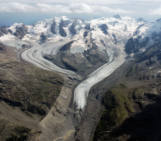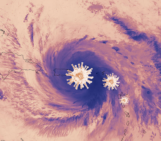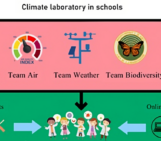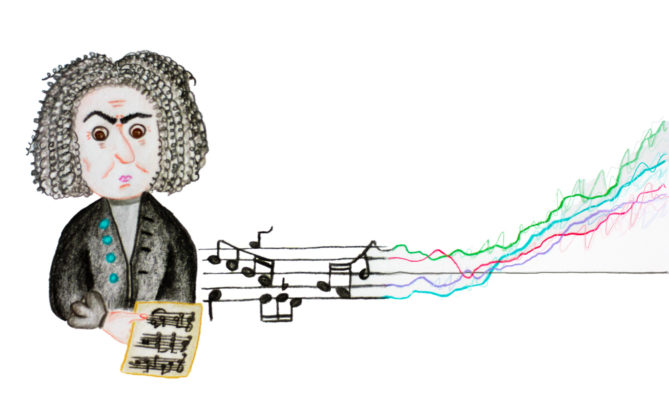
Johann Sebastian Bach’s last work – Contrapunctus XIV – is an unfinished musical composition. For many years, scholars considered that this piece was left unfinished because of Bach’s deteriorating health in his final years and eventual death. However, researchers recently found evidence that Bach might have left this piece intentionally unfinished, as he thought that there was still room for improvement. Furthermore, he intended to stimulate efforts by future composers and musicologist to complete it [1]. Despite being left unfinished, Bach’s Contrapunctus XIV is performed widely and is regarded as a genuine work of art, both for its musicology and its form. Numerous composers have tried to complete it, while others have preferred to analyze it in its unfinished form as a tool to understand theory of music.
Over the past few decades, the rise in greenhouse gas emissions has resulted in increasing amounts of energy being trapped in the Earth’s atmosphere. This process, often referred to as the greenhouse effect, can concomitantly lead to a rise in temperature and moisture content in the atmosphere, which makes the climate system more prone to extreme events (e.g. intense cyclones, windstorms, unprecedented floods or droughts). However, one may argue that the most striking outcome of climate change is not the magnitude of a single extreme event, rather a systemic disruption of the climate system: weather patterns typical of some latitudes are appearing at other latitudes, the meteorological durations of seasons are rapidly changing, and more [2].
As early as the mid-1950s, scientists initiated the development of the first computerized climate models. Norman Philips was one of the early scientists who studied the drivers of climate variability. His work led to the first general circulation model of its type, that encompassed both atmosphere and hydrosphere. These early models were comparatively simple, and did not consider many of the complex interactions between different components of the Earth system (Figure 1). However, they were used as guidance to advance the understanding of the climate system beyond what could be achieved from only relying on observations, theories or zero dimensional models. Today’s climate models cover a wide range of complex interactions, consider hundreds of variables, and can be used to simulate processes from hourly to centennial or longer time-scales. There are several mechanisms that contribute to the evolution of the climate system. In climate modeling, a key challenge is to understand the relative importance of each mechanism and the interactions between them. Scientists build climate models using fundamental physical and chemical laws. These laws are translated into differential equations to explain the interactions between the atmosphere, oceans, land surface, cryosphere and other components of the earth system. Examples include the Stefan Boltzmann law, the Clausius-Clapeyron equation, the Navier-Stokes equations, and more.
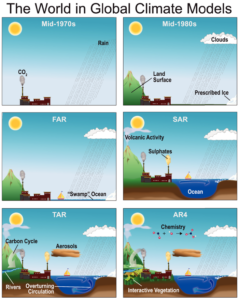
Figure 1: The complexity of climate models has increased over the last few decades (Figure 1.2, IPCC forth assessment Report, 2007).
Climate is the combination of weather conditions over long time periods, typically diagnosed through observables such as temperature, precipitation, wind and more, averaged over large spatiotemporal scales. Climate models try to explain how the Earth’s climate has evolved over time, from short (e.g. a few decades) to very long (e.g. millennial or even longer) timescales. Additionally, they project how climatological variables are likely to change over time, and help in understanding anthropogenic effects on the present-day and future climates.
Due to the complexity of the climate system and computational limitations, the earth’s surface is discretized into a series of boxes which are called “grid cells.” The physical equations are then computed for each of these grid cells for different variables. The size of the grid, known as the spatial resolution, will affect the number and detail of the processes simulated within the climate model. A higher resolution model will have smaller grid cells, and vice versa. With a higher resolution, more fine-scale details of the climate can be simulated. Any increase in resolution comes with a large computational cost: doubling the resolution results in approximately an order of magnitude increase in computational power. The typical grid cell size for the latest generation of climate models is in the order of 100 km [3].
To represent processes which occur at a smaller scale than the size of the grid cells, models rely on the so-called parameterizations. Normally, a model would attempt to reproduce the processes underlying a specific feature of the climate system; for example, atmospheric convection to produce the value of some variable of interest. With parametrization, average or expected values of the variable are specified, or determined through empirical relations. Furthermore, parametrizations can be used to simplify the model, especially when it is difficult to include a clear physical mechanism underlying the feature of interest. Commonly, parameterized features in atmospheric models include atmospheric convection, cloud-microphysical and aerosol processes, boundary layer processes, radiation and some aspects of gravity waves [4]. Parameterizations are one of the main sources of uncertainty in climate models and one of the largest challenges for future model development. In many cases, it is not possible to constrain the parameterized variables to a specific value, so the model needs to include somewhat arbitrary estimates. Because of these parameterizations, climate models come with considerable uncertainties and biases when compared to the verifying reality, such as observational measurements.
Still, the aim of climate modeling is not, and cannot be, to provide a perfect representation of the climate system. Rather, the aim is to construct models that represent processes within the climate system to a degree which is adequate for a range of practical purposes [5]. For example, climate models cannot be used to predict the exact timing or magnitude of an extreme precipitation event. Rather, they can be used to grant an estimate of precipitation trends over a region, in order for policy makers to take informed decisions and prepare for possible future drought or flooding events.
The usefulness of our imperfect climate models emerges clearly. For example, the global temperature trend over the past century can be modeled with a high level of confidence when both human and natural factors are included, which strengthens our understanding of anthropogenic climate change. Models can also reproduce other observed changes, such as night-time temperatures rising more rapidly than daytime ones, the larger-than-average warming in the Arctic (often referred to as Arctic Amplification) and the short-term global cooling (and subsequent recovery), which happened after the past major volcanic eruptions [6]. Model global temperature projections made over the last two decades have also been in overall agreement with observations over that period.
Despite their shortcomings, climate models should therefore not be undervalued. They bring new insights to processes which control the Earth’s climate and provide a testbed for scientists to verify new hypotheses and theories. Similarly, many policy makers indirectly base their decisions on the output of climate models. Therefore, new generations of scientist should engage to enhance the performance of climate models.
Like Bach’s Contrapunctus XIV, climate models are an unfinished piece of work. Yet, they should be considered as a breakthrough in science and a genuine piece of art. They are adopted by numerous researchers in different fields of science to project future climates and their impacts. Climate scientists (like musicologists) are also trying to put pieces of their knowledge together, to complete this harmonious piece of art. This process contributes to a better understanding of the climate system which will be left to the future generation of scientists to further improve upon, so that we may have an even better grasp of earth’s past and future climates.
Link to a short version of Contrapunctus XIV, played on piano by Glenn Gould.
REFERENCES [1] Hughes, I. N. M.: Accident or Design? New Theories on the unfinished Contrapunctus 14 in JS Bach’s The Art of Fugue BWV 1080. [online] Available from: https://researchspace.auckland.ac.nz/handle/2292/392, 2006. [2] Gallagher Shannon, N.: What’s Going on Inside the Fearsome Thunderstorms of Córdoba Province?, Newyork Times Mag. [online] Available from: https://www.nytimes.com/interactive/2020/07/22/magazine/worst-storms-argentina.html, 2020. [3] Flato, G., Marotzke, J., Abiodun, B., Braconnot, P., Chou, S. C., Collins, W., Cox, P., Driouech, F., Emori, S., Eyring, V. and Forest, C.: Evaluation of climate models. In Climate Change 2013: The Physical Science Basis. Contribution of Working Group I to the Fifth Assessment Report of the Intergovernmental Panel on Climate Change. [online] available here, 2013. [4] Boucher, O., D. Randall, P. Artaxo, C. Bretherton, G. Feingold, P. Forster, V.-M. Kerminen, Y. Kondo, H. Liao, U. and Lohmann, P. Rasch, S.K. Satheesh, S. Sherwood, B. S. and X. Y. Z.: Clouds and Aerosols. In Climate Change 2013: The Physical Science Basis. Contribution of Working Group I to the Fifth Assessment Report of the Intergovernmental Panel on Climate Change. [online] Available from: https://www.ipcc.ch/site/assets/uploads/2018/02/WG1AR5_Chapter07_FINAL-1.pdf, 2013. [5] Baumberger, C., Knutti, R. and Hirsch Hadorn, G.: Building confidence in climate model projections: an analysis of inferences from fit, Wiley Interdiscip. Rev. Clim. Chang., 8(3), e454, doi:10.1002/wcc.454, 2017. [6] Le Treut, H., Somerville, R., Cubasch, U., Allen, M., Treut, L., Somerville, R., Cubasch, U., Ding, Y., Mauritzen, C., Mokssit, A., Peterson, T., Prather, M., Marquis, M., Averyt, K. and Tignor, M.: Historical Overview of Climate Change. In Climate Change 2007: The Physical Science Basis. Contribution of Working Group I to the Fourth Assessment Report of the Intergovernmental Panel on Climate Change. [online] Available from: https://www.ipcc.ch/site/assets/uploads/2018/03/ar4-wg1-chapter1.pdf, 2007.
This post has been edited by the editorial board.

